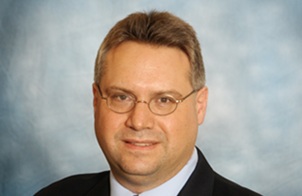
Pools are a popular amenity for hotel guests, as they provide a place for adults to relax and kids to play. While many hotels have pools open all year long, the long-awaited pool season is here for some in colder climates. Many outdoor pools opened around Memorial Day weekend, offering guests a place to refresh during their hotel stay.
With hotel staff juggling multiple activities like guest bookings, room cleanings and room service, it is important that proper care and attention are also placed on pool maintenance. Pool chemicals and equipment are critical tools in pool operations to maintain proper sanitation. Utilizing these tools reduces bacteria and algae growth, helping keep guests safe during their swim.
There are many different types of equipment and water chemicals that are used to help maintain safety for recreational pools. It is important for pool operators to be well-versed in how to safely manage the ones that their pool uses, particularly when it comes to water treatment chemicals that require safe handling and storage. It is also important to understand saltwater pools, water testing, chemical feeders, NSF standards for equipment and chemicals, as well as public health regulations for recreational water facilities.
Water Treatment Chemicals
Water treatment chemicals are essential to maintaining optimum pool chemistry and protecting guests and staff. They primarily include disinfectants, acids and bases that kill bacteria and viruses and lower the water pH. Therefore, it is critical for pool operators to know how to handle them safely, especially regarding their storage.
Specifically, sodium hypochlorite, or “bleach”, is a common pool chemical used for water disinfection. Operators should properly store this pool chemical to ensure it remains effective, storing it in a cool, dry and ventilated place. Additionally, operators must be aware of the manufacturer’s recommended shelf life, which may slightly differ from brand to brand. While in storage, bleach should be checked before use to ensure it is within the recommended pH storage level range of 11-13. Pool water should also be maintained at the optimum pH range, as adding bleach for disinfection will generally increase the pH in the pool.
Chemical Feeders
Chemical feeders are common devices used in pool operations. They slowly release chemicals into the pool. To ensure that chemical feeders are properly functioning, operators should check the feeder’s use instructions to ensure that the prescribed product and dose are being utilized. This helps to ensure uniformity in the output of the dosed chemical.
Saltwater Pools
It is important to understand that pools that utilize saltwater for sanitation do contain chlorine. These pools operate by having saltwater generators leverage electricity to produce chlorine that is dispersed in the pool. Operators must regularly measure the salt levels in the pool to reduce the risk of damage to the equipment or a generator shutdown.
Water Testing
Water quality testing kits are commonly used for sampling and analyzing pool water. Two main measures that require frequent monitoring are pH and chlorine residual. For pH, pool operators will want to measure alkalinity as it is a pH stabilizer, helping to ensure that pool chemicals are effective. Acidic demand also helps with pH monitoring, as it informs the operator how much acid is needed to lower the pH levels. Chlorine residuals must be monitored to ensure that these are at the correct levels necessary for water disinfection.
Product Certifications
To ensure that pool equipment and chemicals meet public health standards, operators should look for products that are certified to either NSF/ANSI/CAN 50: Equipment and Chemicals for Swimming Pools, Spas, Hot Tubs and Other Recreational Water Facilities (NSF/ANSI/CAN 50) or NSF/ANSI/CAN 60: Drinking Water Treatment Chemicals – Health Effects (NSF/ANSI/CAN 60). It is important to be knowledgeable about both standards to understand how they protect safety.
NSF/ANSI/CAN 50
Developed in 1977, NSF/ANSI/CAN 50 is the industry benchmark for ensuring that certified equipment is conducive to health and safety for recreational water use. It covers a range of criteria, including performance, safety and durability for various pool equipment and associated products. This standard also includes health effects evaluation criteria for pool water treatment chemicals.
NSF/ANSI/CAN 60
This standard indirectly relates to pool safety by addressing the health effects of drinking water treatment chemicals. It is important because it verifies that water treatment chemicals for public drinking water do not contain harmful contaminants. This helps to ensure pool safety, as swimmers may accidentally consume some of the pool water.
Public Health Regulations
The Model Aquatic Health Code (MAHC) was developed and is continuously maintained by the United States Centers for Disease Control (CDC). It includes references to many industry standards, including NSF/ANSI/CAN 50, to protect pool users and operators from waterborne illnesses that can come from water contamination and pathogens. The MAHC is adopted in many state pool codes and serves as a best practice document for pool operators as guidelines for swimming pool maintenance and management. In addition to the MAHC, pool operators should also become familiar with the state and local pool codes that apply in the specific location of the facility.
The MAHC, and many state and local pool codes, require that pool equipment such as skimmers, filters and chemical feeders be certified to NSF/ANSI/CAN 50. In addition, for water treatment chemicals used in pool applications, the MAHC requires the products to be certified to NSF/ANSI/CAN 50 and/or NSF/ANSI/CAN 60. Operators can search for NSF-certified systems here: NSF/ANSI/CAN 50; NSF/ANSI/CAN 60.
The Summer Season
With many outdoor pools open, operators are encouraged to prepare for the busy season. Operators who understand water treatment chemical storage, water quality test kits, saltwater pools and chemical feeders will have good knowledge of the basics of pool maintenance. Additionally, by following public health regulations like the MAHC and utilizing NSF-certified products to NSF/ANSI/CAN 50 and NSF/ANSI/CAN 60, operators can help to make sure that pools are safe while guests have fun.
About the Author
As a Senior Manager in NSF’s Water division, Blake Stark is responsible for the Water Treatment Chemicals and Filtration Media Certification programs. He has been with NSF for over 30 years, having also served as part of the audit delivery team, conducting site audits for water supply products to NSF standards. Prior to joining NSF, Stark was a sanitarian for Lenawee County, Mich., where he conducted site assessments for water supplies and wastewater systems. He is active in several water treatment chemical standards committees, is a member of the American Water Works Association (AWWA) Standards Council and the current chair of the AWWA Disinfectant Chemicals Committee.
About NSF
NSF is an independent, global services organization dedicated to improving human and planet health for more than 80 years by developing public health standards and providing world-class testing, inspection, certification, advisory services and digital solutions to the food, nutrition, water, life sciences and consumer goods industries. NSF has 40,000 clients in 110 countries and is a World Health Organization (WHO) Collaborating Center on Food Safety, Water Quality and Medical Device Safety.
NSF’s Water Division provides risk assessments, testing, inspection, and certification services for the water industry from source to tap. NSF facilitated the development of the American National Standards for all materials and products that treat or come in contact with drinking water to help protect public health and the environment and minimize adverse health effects. In 1990, the U.S. EPA replaced its own drinking water product advisory program with these NSF standards.






